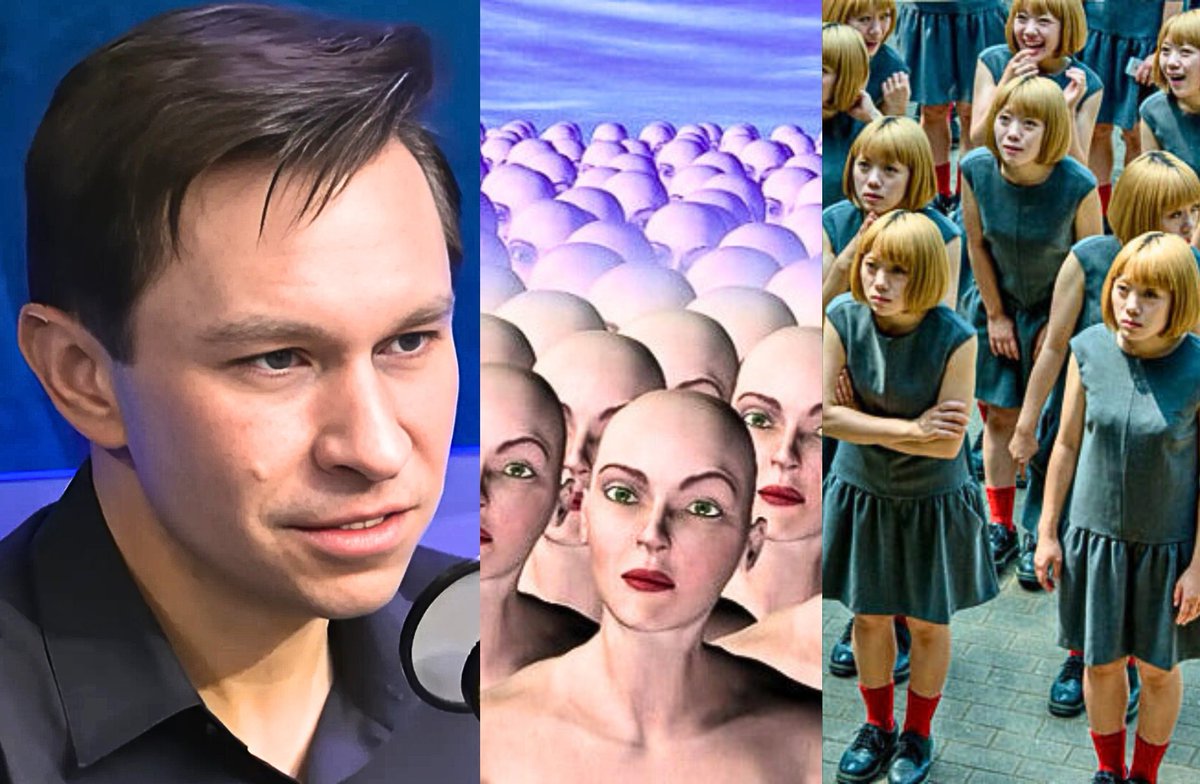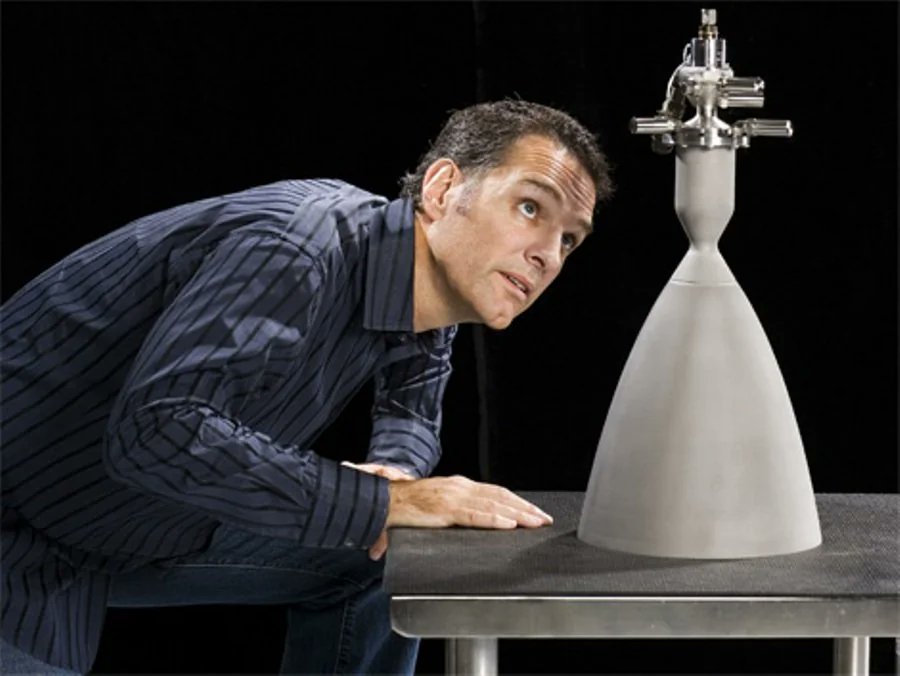This Man Explains Why You Shouldn't Use Wireless Headphones: He made the choice a few years ago to stop using Bluetooth headphones based on his personal experience. He kept getting cysts behind his ears, which he was told were lymphatic swellings. They would actually drain lymph.
Andrew Huberman, Ph.D., is a neuroscientist and tenured professor in the Department of Neurobiology and by courtesy, Psychiatry and Behavioral Sciences at Stanford School of Medicine.
A thread🧵
Andrew Huberman, Ph.D., is a neuroscientist and tenured professor in the Department of Neurobiology and by courtesy, Psychiatry and Behavioral Sciences at Stanford School of Medicine.
A thread🧵

Dr. Andrew Huberman personally stopped using Bluetooth earbuds because he experienced lymph swellings behind his ears and felt heat effects, which made him concerned about potential health risks.
He interviewed Dr. Matthew MacDougall, the head neurosurgeon at Neuralink about the electromagnetic fields (EMFs) from earbuds, who wasn't concerned about them, but Dr. Huberman chose to switch to wired headphones to minimize any potential risks.
Dr. Huberman also mentioned heat generation associated with earbuds use, and while discussing this topic with a neurosurgeon, it was suggested that the body's natural cooling system should be sufficient to manage any localized heat from such devices
youtu.be/3ZGItIAUQmI
Dr. Huberman also mentioned heat generation associated with earbuds use, and while discussing this topic with a neurosurgeon, it was suggested that the body's natural cooling system should be sufficient to manage any localized heat from such devices
youtu.be/3ZGItIAUQmI
Should you be really worried about Bluetooth earphones (non-ionizing electromagnetic field (EMF) technology)?
In 2015, a group of scientists signed a petition expressing "serious concern" about the potential health risks of non-ionizing electromagnetic field (EMF) technology, like cancer. All Bluetooth devices use EMF technology.
emfscientist.org/index.php/emf-…
However, the National Cancer Institute asserts that "no scientific evidence establishes a definite link between wireless device use and cancer or other illnesses." It recommends using Bluetooth as a safer way to use cell phones.
cancer.gov/about-cancer/c…
In 2015, a group of scientists signed a petition expressing "serious concern" about the potential health risks of non-ionizing electromagnetic field (EMF) technology, like cancer. All Bluetooth devices use EMF technology.
emfscientist.org/index.php/emf-…
However, the National Cancer Institute asserts that "no scientific evidence establishes a definite link between wireless device use and cancer or other illnesses." It recommends using Bluetooth as a safer way to use cell phones.
cancer.gov/about-cancer/c…

Is Bluetooth Technology Bad for Your Brain?
People often worry that using wireless headphones could be harmful to the brain and increase cancer risk. However, Bluetooth technology is a type of non-ionizing radiation, meaning it is not cancer-causing.
fda.gov/radiation-emit…
Still, conclusions about Bluetooth and its link to cancer risk remain elusive. Research has not conclusively linked RF radiation—specifically, for cell phones—with adverse health effects. However, more studies are needed.
niehs.nih.gov/health/topics/…
People often worry that using wireless headphones could be harmful to the brain and increase cancer risk. However, Bluetooth technology is a type of non-ionizing radiation, meaning it is not cancer-causing.
fda.gov/radiation-emit…
Still, conclusions about Bluetooth and its link to cancer risk remain elusive. Research has not conclusively linked RF radiation—specifically, for cell phones—with adverse health effects. However, more studies are needed.
niehs.nih.gov/health/topics/…
250 Scientists Warn Of Bluetooth Headphones Cancer Risk
In 2019, 250 scientists from over 40 countries have signed a petition to the WHO and UN to warn against radiowave radiation from wireless technologies.
dailymail.co.uk/health/article…
In 2019, 250 scientists from over 40 countries have signed a petition to the WHO and UN to warn against radiowave radiation from wireless technologies.
dailymail.co.uk/health/article…
No matter what type of headphones you use, it is essential to be aware of health risks that are more immediate than tiny amounts of radiation.
"If you're walking around with your earbuds blasting, and you walk out in front of a car, that's a lot more dangerous than some theoretical tumor 20 years down the road," said Foster.
Headphones can damage your hearing if you do not use them responsibly. You cannot reverse hearing loss, but in many cases, you can prevent it.
It is best to limit your headphone use to 60–90 minutes daily, with regular breaks and a volume of no more than 60% to 80%. Turn the volume down even further if you listen longer than 90 minutes.
The Centers for Disease Control and Prevention (CDC) advises noise-canceling headphones so you will not be tempted to turn up the volume to block out other sounds. However, noise-canceling headphones are not a good choice if you are going out for a walk or are in any other situation where being unable to hear your surroundings is a safety hazard.
"If you're walking around with your earbuds blasting, and you walk out in front of a car, that's a lot more dangerous than some theoretical tumor 20 years down the road," said Foster.
Headphones can damage your hearing if you do not use them responsibly. You cannot reverse hearing loss, but in many cases, you can prevent it.
It is best to limit your headphone use to 60–90 minutes daily, with regular breaks and a volume of no more than 60% to 80%. Turn the volume down even further if you listen longer than 90 minutes.
The Centers for Disease Control and Prevention (CDC) advises noise-canceling headphones so you will not be tempted to turn up the volume to block out other sounds. However, noise-canceling headphones are not a good choice if you are going out for a walk or are in any other situation where being unable to hear your surroundings is a safety hazard.
• • •
Missing some Tweet in this thread? You can try to
force a refresh




















